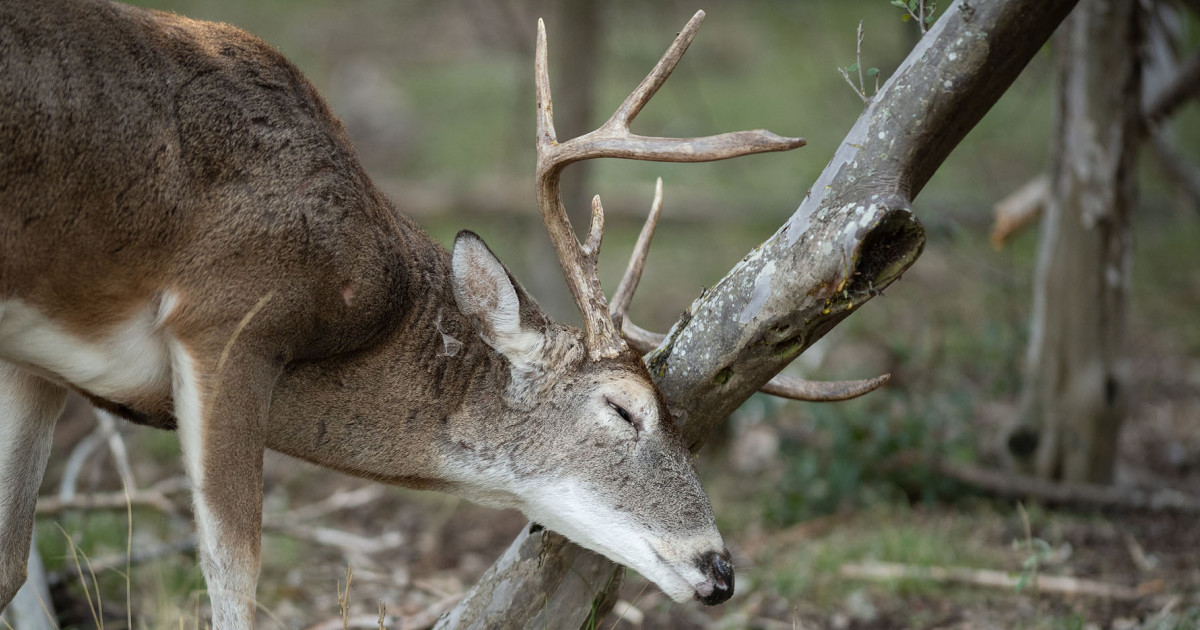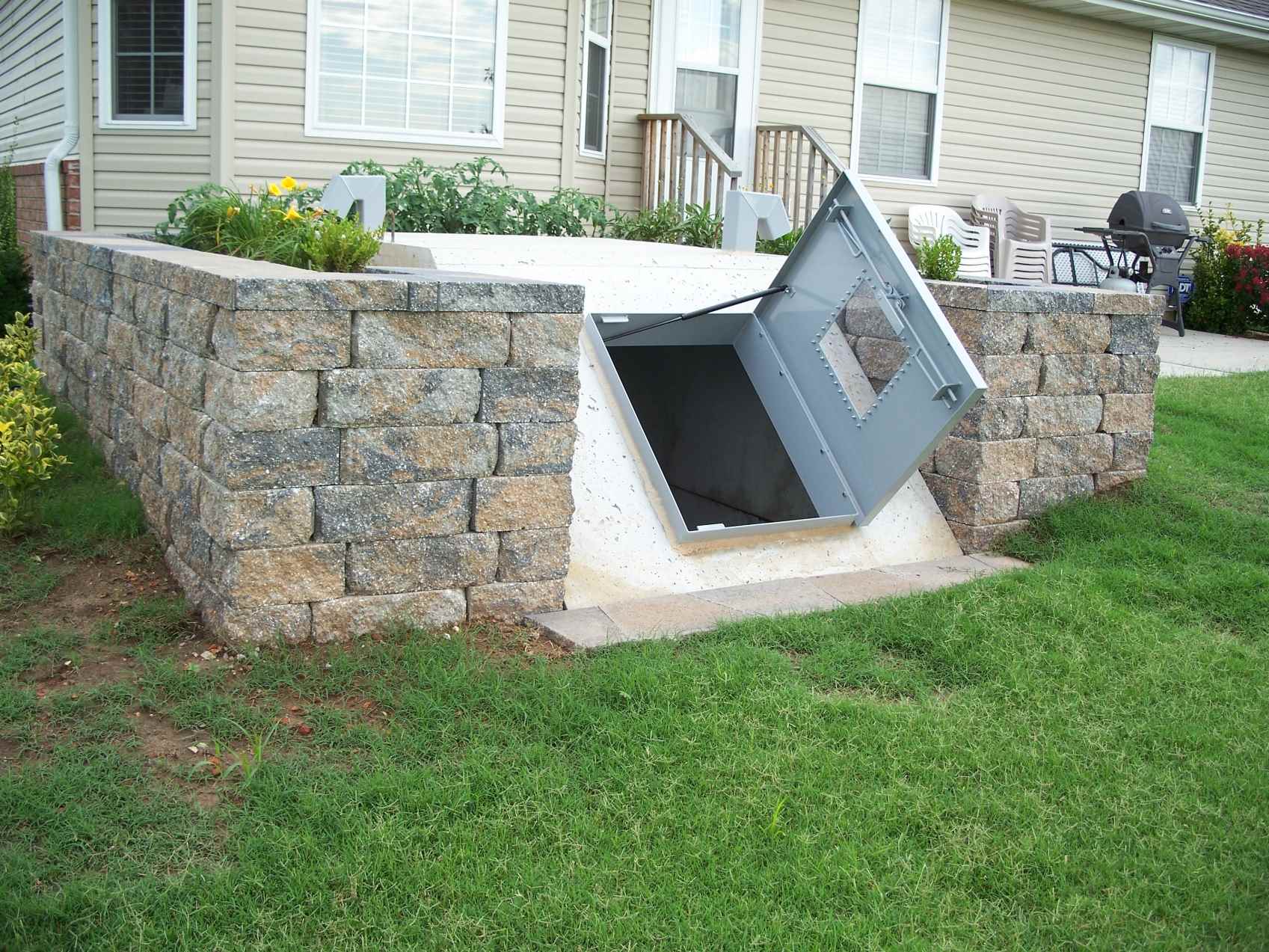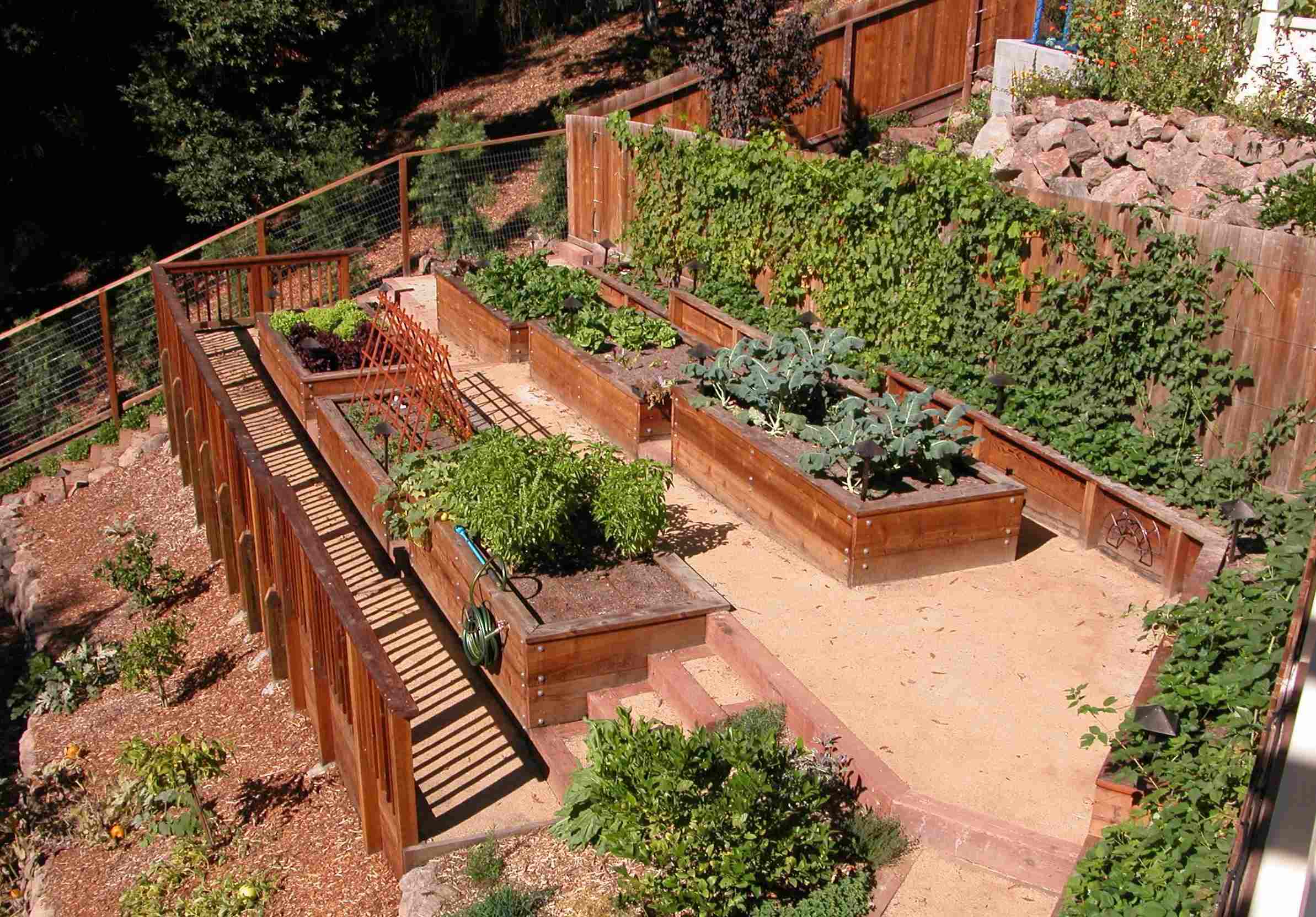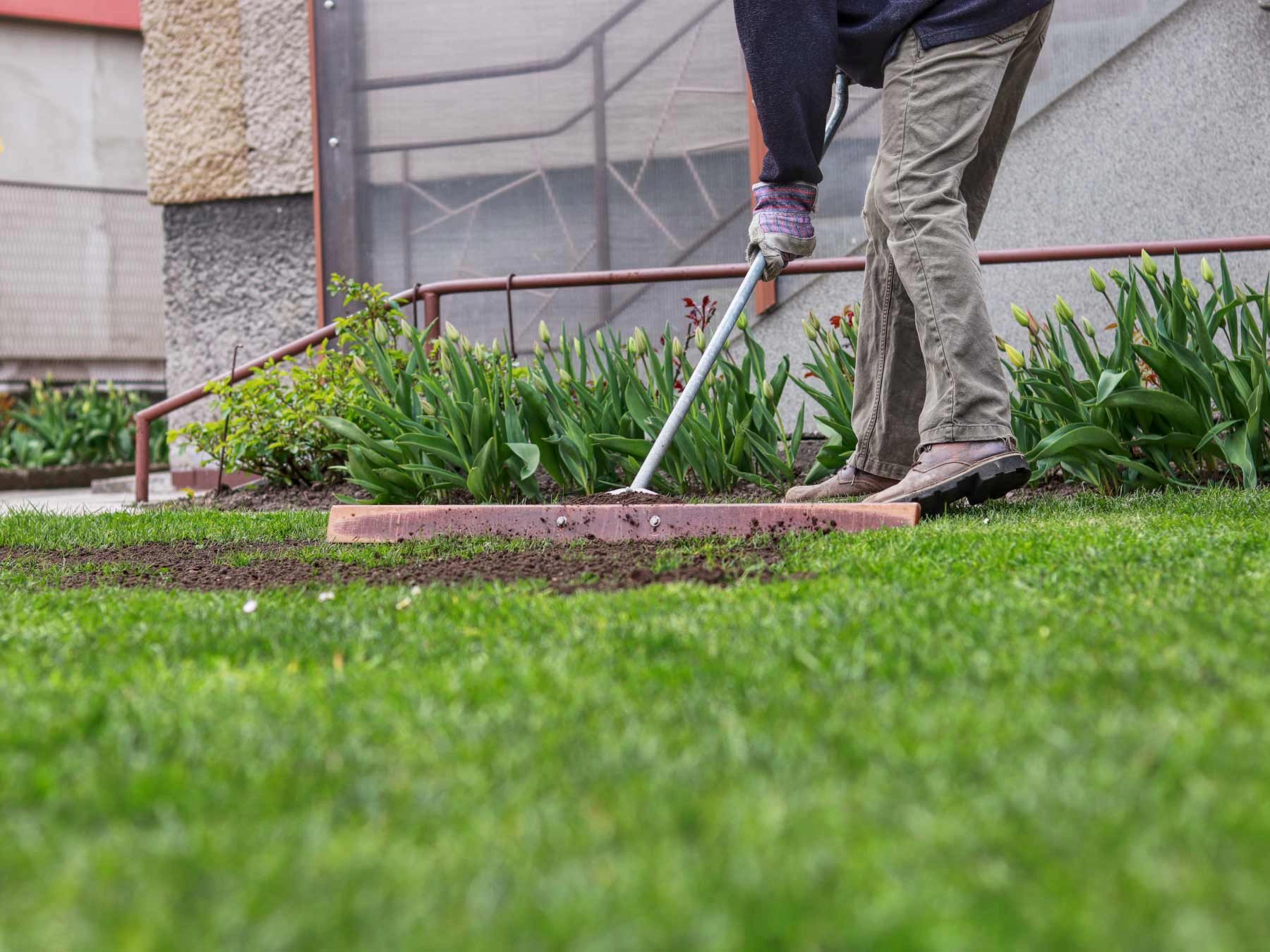Home>Gardening Techniques>DIY Projects>What To Do If There’s A Deer In Your Backyard
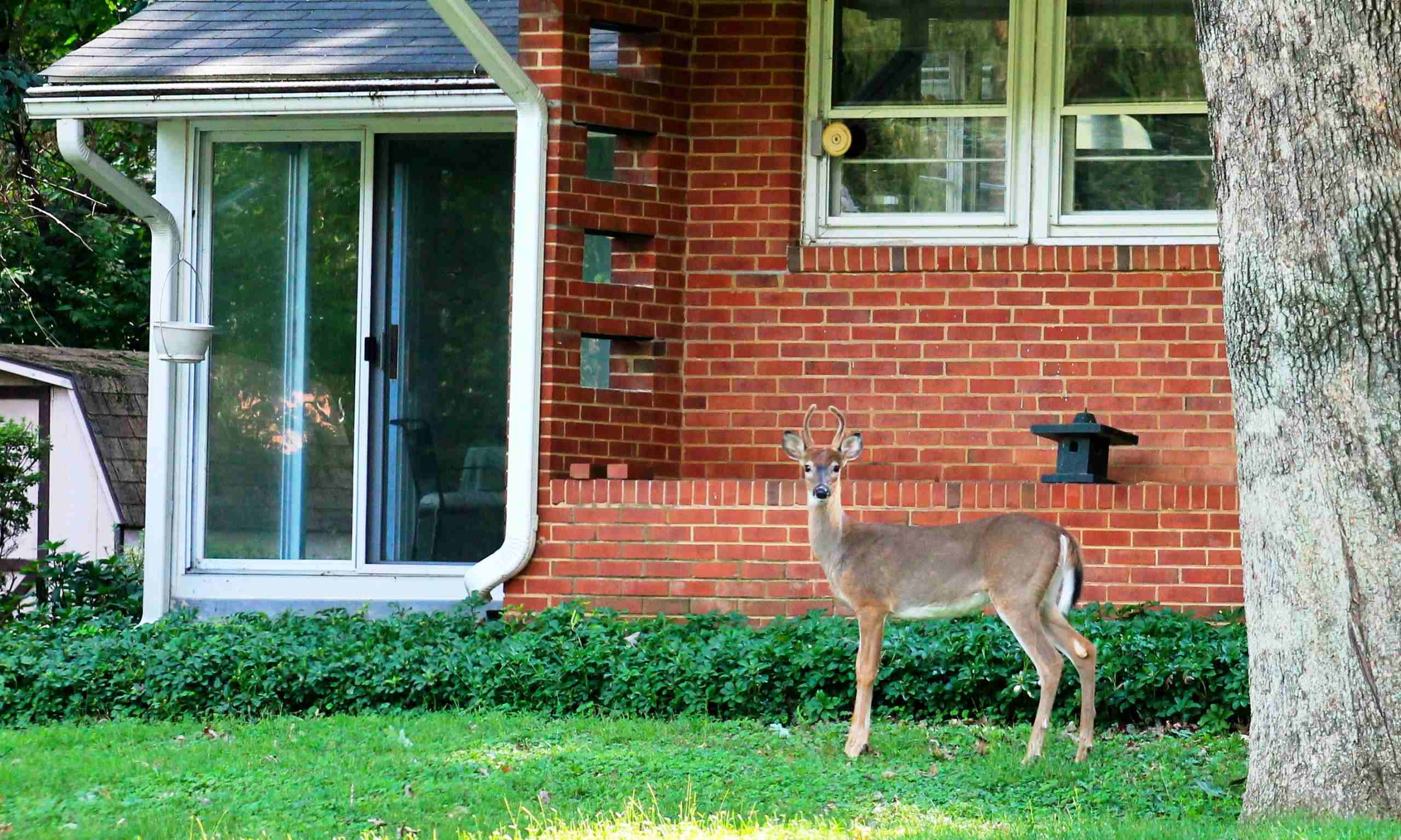

DIY Projects
What To Do If There’s A Deer In Your Backyard
Modified: August 29, 2023
Looking to tackle DIY projects to keep deer out of your backyard? Find expert advice and step-by-step instructions in this comprehensive guide.
(Many of the links in this article redirect to a specific reviewed product. Your purchase of these products through affiliate links helps to generate commission for Chicagolandgardening.com, at no extra cost. Learn more)
Table of Contents
- Introduction
- Identify the presence of deer in your backyard
- Assess potential damage caused by deer
- Implement deer-friendly landscaping techniques
- Secure your backyard to deter deer
- Utilize commercial deer repellents
- Explore homemade deer repellent solutions
- Plant deer-resistant plants in your backyard
- Install motion-activated deterrents
- Use scare tactics to keep deer away
- Consult with wildlife professionals if necessary
- Conclusion
Introduction
Having deer in your backyard can be both exciting and problematic. On one hand, they are magnificent creatures to observe in their natural habitat. On the other hand, they can cause significant damage to your landscape and plants. If you find yourself in a situation where deer have made your backyard their home, it’s important to take appropriate measures to manage their presence.
Deer are known to be voracious eaters, often feasting on flowers, vegetables, and other plants. Their browsing habits can lead to frustration and financial loss for homeowners. Fortunately, there are several effective strategies you can employ to discourage deer from frequenting your backyard and minimize any damage they may cause.
In this article, we will explore various methods and DIY projects that can help you deal with deer in your backyard. From identifying their presence to implementing deterrents, we will cover everything you need to know to effectively manage the situation. Whether you live in a rural area or a suburban neighborhood, these techniques can be invaluable in preserving your landscape and minimizing conflicts with wildlife.
Keep in mind that while we will discuss DIY solutions, it’s important to prioritize your safety and consult with local wildlife experts or authorities if necessary. Understanding the behavior and habits of deer can help you craft an effective plan to coexist peacefully with these beautiful creatures while protecting your prized plants and landscaping efforts.
Identify the presence of deer in your backyard
Before implementing any deer management strategies, it’s crucial to confirm the presence of deer in your backyard. There are several telltale signs that can indicate their presence:
- Sightings: Observe your backyard at different times of the day, especially during dawn and dusk when deer are most active. Look for deer grazing, wandering, or jumping fences.
- Tracks: Look for hoof prints on soft soil, mud, or snow. Deer tracks are distinctively heart-shaped with pointed tips. Measure the size of the tracks to determine if they are left by adult deer or fawns.
- Droppings: Deer droppings, also known as scat, are oval-shaped and dark in color. Their size and frequency can give you an indication of the number of deer visiting your backyard.
- Browsing Damage: Inspect your plants for signs of browsing. Deer tend to feed on leaves, stems, flowers, and buds, often leaving behind a jagged or torn appearance.
- Antler Rubs: Keep an eye out for trees with bark rubbed off at around 3–4 feet from the ground. Male deer often mark their territory by rubbing their antlers against trees.
If you notice any of these signs, it’s clear that deer have made their way into your backyard. Confirming their presence will enable you to take appropriate actions to mitigate any potential damage.
Remember, even if you haven’t spotted deer directly, it’s still possible for them to be visiting your yard. Installing motion-activated cameras can help provide visual confirmation of their presence, especially during nighttime when they’re more active. With a confirmed presence, you can proceed to the next steps in managing deer in your backyard.
Assess potential damage caused by deer
Once you have confirmed the presence of deer in your backyard, it’s important to assess the potential damage they may cause. Understanding the extent of the damage will help you determine the urgency and severity of the measures you need to take. Here are some factors to consider:
- Plant Destruction: Deer are notorious for their browsing habits, and they can devour a significant amount of plants in a short period of time. Assess the damage done to your flowers, shrubs, vegetables, and other foliage. Look for signs of nibbling, missing leaves, or trampled plants.
- Garden Destruction: If you have a vegetable garden, check for damage to your crops. Deer can completely decimate a garden, leaving you without a harvest. Look for telltale signs such as partially eaten vegetables or trampled plants.
- Landscape Destruction: Evaluate any landscape features that may have been damaged by deer. This could include ornamental trees, bushes, or decorative structures. Inspect for broken branches, shredded foliage, or bent fencing.
- Fencing Damage: If you have installed a fence to keep deer out, check for signs of damage. Deer can attempt to jump over or squeeze through fences, resulting in bent or broken sections. Assess the overall effectiveness of your fence in preventing deer entry.
- Additional Wildlife Concerns: Consider the impact of deer on other wildlife in your backyard. Excessive deer activity can disrupt natural ecosystems, causing imbalances and potentially reducing biodiversity.
By understanding the potential damage caused by deer, you can prioritize your efforts and decide which areas of your backyard require immediate attention. This assessment will help you tailor your deer management strategies to address the specific issues you’re facing.
Remember, it’s essential to strike a balance between managing deer and maintaining a harmonious environment for both wildlife and your personal enjoyment. With this in mind, let’s explore some DIY projects and techniques for dealing with deer in your backyard.
Implement deer-friendly landscaping techniques
Managing deer in your backyard doesn’t necessarily mean keeping them out completely. You can create a deer-friendly landscape that provides sustenance and habitat while minimizing damage to your prized plants. Here are some techniques to consider:
- Plant Native Species: Choose plants that are native to your region, as deer are more likely to coexist with native vegetation. Research which plants are less appealing to deer and incorporate them into your landscape design. Native plants also tend to be more resilient and better adapted to the local climate.
- Create Buffer Zones: Designate specific areas of your yard as buffer zones by planting deer-resistant plants or using natural barriers such as shrubs or tall grasses. These areas can act as a natural deterrent and steer deer away from more vulnerable parts of your landscape.
- Use Raised Beds: If you have a vegetable garden, consider using raised beds. These elevated planters make it more challenging for deer to access your crops. Additionally, the height can deter rabbits and other small animals as well.
- Install Rain Gardens: Utilize rain gardens in your landscaping plan. These shallow depressions designed to collect and filter rainwater can be filled with deer-resistant plants. The combination of natural water features and deer-resistant vegetation can create an attractive habitat while minimizing deer damage.
- Group Deer-Resistant Plants: Grouping together plants that deer find less appealing can create a protective zone in your landscape. Utilize this technique around more susceptible plants to deter deer from venturing further into your yard.
- Provide Alternative Food Sources: Consider incorporating deer-friendly plants such as clover or other food plots in a designated area of your yard. By providing an alternative food source, you may encourage deer to graze in a specific area, diverting their attention from your more vulnerable plants.
Remember, while these techniques can help reduce damage caused by deer, they are not foolproof. Deer have preferences, and their tastes can vary regionally. Monitoring the effectiveness of your landscaping choices and making adjustments as needed will be crucial in managing deer in your backyard.
In the next section, we will explore different methods to secure your backyard and deter deer from entering your property.
Secure your backyard to deter deer
One of the most effective ways to manage deer in your backyard is by implementing measures to secure your property and create a deterrent for deer. Here are some DIY projects you can undertake to make your backyard less inviting for these unwanted visitors:
- Install a Deer Fence: Erecting a sturdy fence around your backyard is one of the most reliable methods to keep deer out. Opt for a fence with a height of at least 8 feet to prevent deer from easily jumping over. Use materials such as metal or woven wire mesh to ensure its durability.
- Use Electric Fences: An electric fence can be an effective deterrent for deer. It delivers a mild electric shock upon contact, discouraging deer from attempting to breach the barrier. Follow the manufacturer’s instructions and ensure the fence is properly grounded to maximize its effectiveness.
- Create a Natural Barrier: If an actual fence is not feasible, consider using natural barriers to deter deer. These can include prickly shrubs, thorny plants, or dense hedges. Deer are less likely to try and push through vegetation that is difficult to navigate or uncomfortable.
- Add Height to Existing Fences: If you already have a fence that is lower than 8 feet, you can supplement it by adding height or extensions. Attach metal or wire extensions to the top of the existing fence to make it more challenging for deer to jump over.
- Use Deer Netting: Use deer netting to protect specific areas or plants in your yard. This lightweight mesh can be draped over plants, secured to stakes, or attached to posts to create a physical barrier that prevents deer from accessing your vulnerable plants.
When implementing these security measures, it’s important to consider both the height and sturdiness of the barriers. Deer can be persistent, especially when hungry or seeking shelter, so ensuring the integrity of the deterrents is key to their effectiveness.
It’s worth noting that while fences and other physical barriers can be highly effective in keeping deer out, they can also disrupt the natural movement and migration patterns of other wildlife. It’s important to strike a balance between protecting your yard and maintaining ecological integrity.
In the next section, we will explore the use of commercial deer repellents as another effective method of managing deer in your backyard.
Utilize commercial deer repellents
Commercial deer repellents are readily available and can be an effective tool in deterring deer from your backyard. These products often contain ingredients that emit scents or tastes that deer find unpleasant, causing them to avoid treated areas. Here are some common types of commercial deer repellents:
- Spray-On Repellents: These repellents come in liquid form and can be sprayed directly onto plants, foliage, or areas where deer activity is prevalent. They usually contain a combination of natural ingredients such as garlic, hot peppers, and eggs, which create an odor or taste that deer find repulsive.
- Granular Repellents: Granular repellents are sprinkled onto the ground and create a barrier around your plants or yard. When deer come into contact with the granules, they are deterred by the strong aromas. These repellents often contain ingredients such as dried blood, predator urine, or other natural deterrents.
- Predator Urine: Predator urine, particularly that of coyotes or wolves, can be an effective deterrent. The scent of predator urine triggers a primal fear response in deer, causing them to stay away from treated areas. Predator urine can be purchased in liquid form or in granular form.
- Electronic Repellents: Electronic deer repellents emit ultrasonic noises that are only audible to deer and other wildlife, effectively creating a deterrent. These devices can be hung in trees or placed strategically around your yard to deter deer from approaching your property.
When using commercial deer repellents, it’s important to follow the manufacturer’s instructions carefully. Apply the repellents as directed, reapply after rainfall, and be aware of any potential environmental impacts. Additionally, it’s worth rotating between different types of repellents to prevent deer from getting accustomed to a particular scent or taste.
While commercial deer repellents can be effective, they may need to be reapplied frequently, especially in areas of heavy deer activity. Regular monitoring of your yard and keeping an eye out for signs of deer presence will help you gauge the effectiveness of the repellents and make necessary adjustments.
In the next section, we will explore homemade deer repellent solutions that you can easily create using common household ingredients.
Explore homemade deer repellent solutions
If you prefer to take a more DIY approach to deer repellents, there are several homemade solutions you can create using common household ingredients. These homemade remedies can be just as effective as commercial repellents and are often more cost-effective. Here are a few homemade deer repellent solutions to consider:
- Garlic and Chili Pepper Spray: Create a repellent spray by mixing minced garlic and chili pepper flakes with water. Let the mixture steep overnight, then strain it and pour it into a spray bottle. Spray the mixture on plants, foliage, and other areas where deer tend to frequent. The strong smell and taste will deter deer from approaching.
- Egg and Milk Mixture: Mix together a solution of raw eggs and milk in a 1:4 ratio. Spray this mixture onto plants and areas vulnerable to deer damage. The odor will repel deer, as they dislike the scent of rotten eggs.
- Soap Spray: Grate a bar of strong-smelling soap, such as Irish Spring or Ivory, and mix it with water. Pour the mixture into a spray bottle and apply it to plants and areas where deer are active. The strong scent of the soap acts as a deterrent.
- Hot Pepper Spray: Blend hot peppers, such as jalapeños or habaneros, with water to create a concentrated pepper spray. Strain the mixture and dilute it with more water. Spray this solution onto plants or areas you want to protect. The spicy taste will deter deer from feeding.
- Human Hair: Collect hair clippings from a hair salon or barber shop and spread them around your yard, particularly near vulnerable plants. The smell of human scent can act as a natural deer repellent, as they associate human presence with danger.
While these homemade repellents can be effective, it’s important to note that their potency and longevity may vary. They may require more frequent applications compared to commercial repellents. Additionally, keep in mind that some homemade repellents may wash off easily during rain or irrigation, so reapplication may be necessary.
Experiment with different homemade repellents to find out which methods work best for your specific situation. Remember to always test a small area or plant before applying the repellent to your entire yard to ensure it doesn’t cause any adverse effects.
In the next section, we will discuss the benefits of planting deer-resistant species in your backyard.
Plant deer-resistant plants in your backyard
One effective way to deter deer from your backyard is by planting species that are known to be deer-resistant. While no plant is completely deer-proof, there are certain plants that deer typically find less appealing. By incorporating these deer-resistant plants into your landscaping, you can minimize the likelihood of deer causing significant damage. Here are some popular deer-resistant plant options:
- Lavender: Known for its strong scent, lavender is often unappealing to deer. Its fragrant flowers and foliage can add beauty and a delightful aroma to your garden.
- Yarrow: Yarrow is a hardy perennial with fern-like leaves and clusters of vibrant flowers. It has a strong scent that deters deer, making it a great addition to your deer-resistant landscaping.
- Salvia: Salvia, also known as sage, features beautiful spiky blooms in a range of colors. Its strong scent and fuzzy leaves make it unattractive to deer.
- Rosemary: This fragrant herb is not only a flavorful addition to your culinary endeavors but also an effective deer deterrent. Its woody foliage and pungent aroma make it less appealing to browsing deer.
- Daffodils: These cheerful spring flowers add color and charm to your garden while deterring deer. Daffodils contain alkaloids in their bulbs that make them distasteful to deer.
- Lamb’s Ear: The soft, fuzzy leaves of lamb’s ear plants make them unpalatable to deer. They are easy to grow and can be a lovely addition to your garden borders or as ground cover.
When selecting deer-resistant plants, it’s important to consider your local climate and growing conditions to ensure their success. Keep in mind that young or newly planted deer-resistant plants may need additional protection until they become established.
Remember, while deer-resistant plants may deter deer from feeding, other factors such as hunger, availability of food, and proximity to deer habitats can influence their behavior. It’s still important to utilize other deer management techniques in conjunction with planting deer-resistant species.
In the next section, we will explore the use of motion-activated deterrents as another effective method for deterring deer in your backyard.
Install motion-activated deterrents
Motion-activated deterrents can be an effective way to startle and deter deer from entering your backyard. These devices utilize sensors that detect motion and then trigger a response, such as noise, water spray, or flashing lights. The sudden activation of these deterrents surprises deer and discourages them from continuing their activity in your yard. Here are some commonly used motion-activated deterrents:
- Motion-Activated Sprinklers: These devices connect to your existing irrigation system or water source and activate when deer come into range. The sudden burst of water startles the deer, convincing them to seek shelter elsewhere. The added benefit of watering your garden is an added bonus.
- Ultrasonic Alarms: Ultrasonic devices emit high-frequency sounds that are ultrasonic, meaning they are beyond the range of human hearing but can be heard by deer. These sounds mimic predator warning signals, causing deer to flee the area.
- Scarecrows: This classic deterrent uses a combination of motion and visual cues to frighten deer away. Scarecrows can be designed to resemble humans or predatory animals, creating a sense of danger for deer.
- Solar-Powered Predator Decoys: These decoys are designed to resemble natural predators such as owls, snakes, or coyotes. They feature movement mechanisms powered by solar panels, creating a realistic and unpredictable deterrent.
- Bell or Wind Chime Systems: Hanging bells or wind chimes around your garden can help deter deer. The noise created by the movement of these objects can startle deer and discourage them from approaching.
When installing motion-activated deterrents, strategically place them in areas prone to deer activity or near vulnerable plants. It’s important to periodically move and adjust the location of the deterrents to prevent deer from becoming acclimated to them.
It’s worth noting that motion-activated deterrents may also affect other wildlife and domestic pets. Ensure that these deterrents are not causing harm or undue stress to non-target species. Consider the potential impact on birds, squirrels, and other beneficial wildlife in your yard.
By incorporating motion-activated deterrents into your deer management strategy, you can create a dynamic and ever-changing environment that discourages deer from settling in your backyard.
In the next section, we will explore various scare tactics that can help keep deer away from your property.
Use scare tactics to keep deer away
Scare tactics can be an effective technique to deter deer from your property by creating an environment that is perceived as unsafe or threatening. These methods aim to startle and discourage deer from entering your backyard. Here are some common scare tactics you can use:
- Noise makers: Using noise-making devices such as wind chimes, tin cans, or even motion-activated radios can create sudden and unexpected sounds that frighten deer. Place these noise makers strategically around your yard to startle and deter deer.
- Motion-activated lights: Installing motion-activated lights can create sudden bursts of illumination that spook deer. Choose lights with sensors that detect movement and activate bright lights, mimicking the presence of a human or predator.
- Reflective materials: Hang reflective tape or aluminum foil strips in your garden. When the light hits these materials, they create flashes and reflections that can startle and confuse deer, making them hesitant to enter your yard.
- Predator decoys: Placing realistic decoys of predators such as coyotes or dogs in your yard can create the illusion of danger. Rotate the decoys periodically to prevent deer from becoming accustomed to them.
- Scare balloons: Scare balloons are large, inflatable objects with large eyes or predator-like markings. These balloons sway in the wind, mimicking movement and deterring deer from approaching.
It’s important to vary these scare tactics to prevent deer from becoming accustomed to a specific method. Regularly change the location, appearance, or sound of these scare devices to maintain their effectiveness.
Remember that scare tactics may only provide temporary deterrence, as deer can eventually become accustomed to certain stimuli. It’s essential to combine scare tactics with other deer management strategies to achieve long-term success.
In the next section, we will discuss the importance of consulting with wildlife professionals to address persistent deer issues.
Consult with wildlife professionals if necessary
If your efforts to manage deer in your backyard prove to be challenging or ineffective, it may be time to seek assistance from wildlife professionals. These experts have the knowledge and experience to provide guidance and implement more advanced measures, especially in areas with high deer populations or where deer-human conflicts are prevalent. Here are some reasons why consulting with wildlife professionals can be beneficial:
- Expert Advice: Wildlife professionals can assess your specific situation and provide tailored recommendations based on the local deer population and behavior. They can offer insights into effective deer management strategies and offer solutions that may not be widely known.
- Permits and Legalities: In some regions, managing deer populations may require permits or adherence to specific regulations. Wildlife professionals can help navigate the legal aspects of deer management, ensuring you stay compliant with local laws.
- Trap and Relocation: In areas with excessive deer populations, wildlife professionals may be able to assist with trap and relocation programs. These programs safely capture deer and transport them to more suitable habitats, alleviating the pressure on your backyard.
- Fencing Design and Installation: If you need assistance in designing or installing a deer fence, wildlife professionals can provide expert advice, ensuring you choose the right materials and follow proper installation techniques.
- Education and Community Outreach: Wildlife professionals often engage in educational programs and community outreach initiatives to create awareness about deer behavior, management techniques, and the importance of coexisting with wildlife. They can offer resources and support to help you and your community address deer-related issues.
By consulting with wildlife professionals, you gain access to their expertise and resources, increasing the likelihood of finding effective and sustainable solutions to manage deer in your backyard. They can help you strike a balance between deer management and promoting biodiversity within your local ecosystem.
Remember, wildlife professionals are dedicated to the well-being and conservation of wildlife. Their expertise can provide valuable insights into managing deer populations while ensuring the long-term health of both deer and your backyard environment.
With the help of wildlife professionals, you can find the best course of action to address persistent deer issues and create a harmonious coexistence with these magnificent creatures.
Conclusion
Dealing with deer in your backyard can be a challenging task, but with the right strategies and DIY projects, you can effectively manage their presence while protecting your landscape and plants. Identifying the presence of deer, assessing potential damage, and implementing deer-friendly landscaping techniques are crucial starting points. Securing your backyard with fences or natural barriers, and utilizing commercial or homemade deer repellents can further deter deer from entering your property.
Planting deer-resistant species, installing motion-activated deterrents, and using scare tactics can provide additional layers of protection. These strategies aim to create an environment that deer find less inviting and more challenging to navigate. Lastly, if your efforts are not yielding the desired results, consulting with wildlife professionals can provide expert advice and assistance in implementing more advanced measures.
It’s important to remember that while managing deer is necessary, it’s equally important to respect and coexist with wildlife. Strive for a balanced approach that prioritizes the well-being of both your backyard ecosystem and the deer themselves.
By combining these DIY projects and techniques, you can create a backyard that is less appealing to deer, reducing the likelihood of damage and conflicts. Take the time to assess your specific situation, experiment with different methods, and adapt your approach based on the effectiveness of each strategy. With patience and persistence, you can successfully manage deer in your backyard, creating a harmonious environment for both wildlife and yourself.
